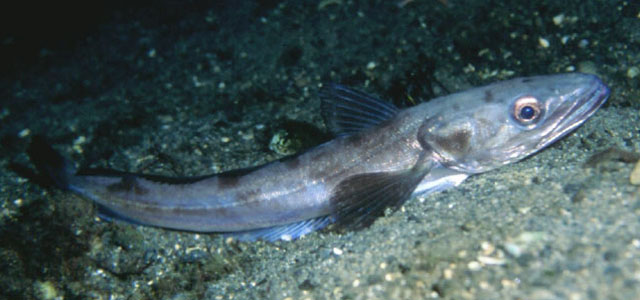| Merlucciidae (Merluccid hakes) |
| 140 cm TL (male/unsexed); max.weight: 15 kg; max. reported age: 20 years |
|
demersal; marine; depth range 18 - 1075 m |
| Eastern Atlantic: Norway and Iceland, southward to Mauritania. Also in the Mediterranean Sea and along the southern coast of the Black Sea. |
|
Dorsal spines (total): 0-0; Dorsal soft rays (total): 43-51; Anal soft rays: 36-40. Inside of mouth and branchial cavity black. Second dorsal and anal fins notched. First vertebra and neural spine attached to skull. Vertebrae 50-52. |
| Minimum depth from Ref. 128002. Found usually between 70 and 370 m depth. Adults live close to the bottom during day-time, but move off-bottom at night. Adults feed mainly on fish (small hakes, anchovies, pilchard, herrings, cod fishes, sardines and gadoid species) and squids. The young feed on crustaceans (especially euphausiids and amphipods). Are batch spawners (Ref. 51846). Almost entirely marketed fresh, whole or filleted, to specialized restaurants or retail markets (Ref. 58452). Utilized fresh, dried or salted and frozen; can be steamed, fried, microwaved and baked (Ref. 9988). Stocks seem to be over-fished (Ref. 35388). |
|
Least Concern (LC); Date assessed: 01 October 2015 Ref. (130435)
|
| harmless |
Source and more info: www.fishbase.org. For personal, classroom, and other internal use only. Not for publication.
